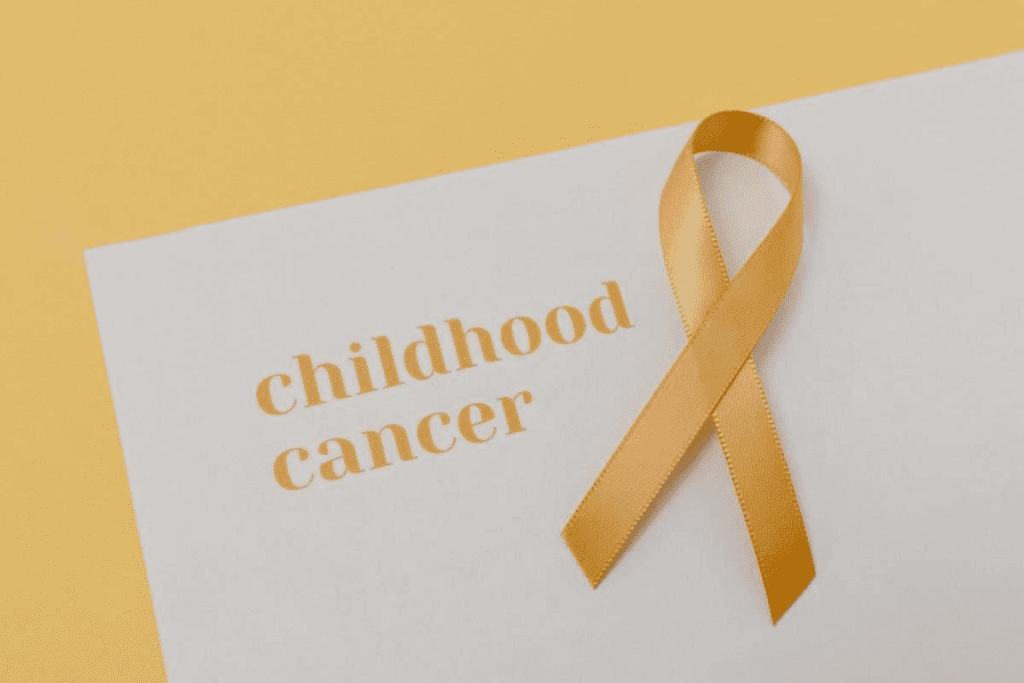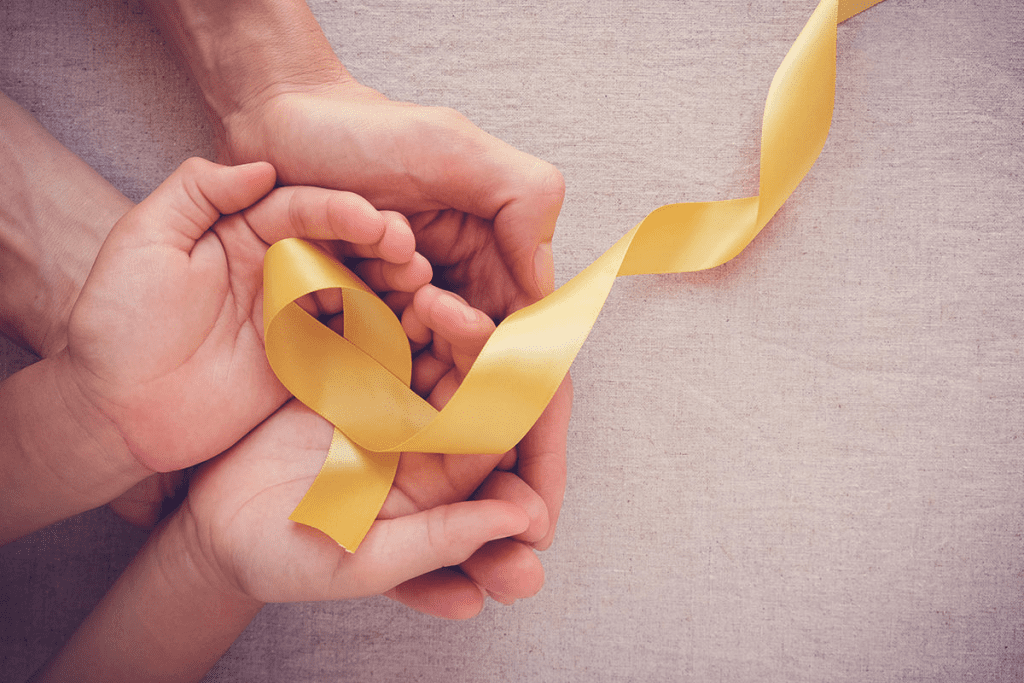Last Updated on October 21, 2025 by mcelik

When a diagnosis of cancer is made in a child, it can be very scary for parents. We want to help you understand the common treatments for childhood cancer. We’ll look at the latest in pediatric oncology.
Chemotherapy is often the first step in treating most childhood cancers. We’ll see how it compares to treatments for adults. New ways in personalized medicine are changing how we treat childhood cancer. These methods are made just for each child’s cancer.
Childhood cancer is rare but serious, affecting thousands of kids every year. It comes in many forms, each needing its own treatment plan. We’ll look at the main types of pediatric cancers and their survival rates. This will show how far we’ve come and what we’re working on.
The top childhood cancers are leukemia, brain and central nervous system (CNS) tumors, and lymphomas. Leukemia is the most common, making up about 30% of childhood cancers. It’s a blood and bone marrow cancer, caused by abnormal white blood cells.
Brain and CNS tumors are also common, affecting the brain and spinal cord. These tumors can be either benign or malignant, with varying severity.
Lymphomas, cancers of the lymphatic system, are also common in kids. They’re split into Hodgkin lymphoma and non-Hodgkin lymphoma, each needing different treatments.

Survival rates for childhood cancer have greatly improved. The Childhood Cancer Society reports a big jump in five-year survival rates. This shows how far treatment and care have come.
Today, over 85% of kids with cancer in the U.S. live for at least five years after diagnosis. This success is thanks to better treatments and the hard work of healthcare teams.
Yet, childhood cancer is a top killer of kids by disease. We’re facing challenges in treating some cancers and supporting survivors long-term.
Chemotherapy is a key treatment for many childhood cancers. It’s a vital part of pediatric oncology. The treatment is both widespread and complex.
Chemotherapy for kids is more intense than for adults. This is because childhood cancers are often more aggressive. It also means kids have a better chance of being cured with strong treatment.
Protocols vary based on the cancer type, the child’s age, and their health. For example, leukemia treatment might use different drugs than brain tumor treatment.
Each childhood cancer type needs its own chemotherapy mix. Kids with Hodgkin lymphoma might get doxorubicin, bleomycin, vinblastine, and dacarbazine (ABVD). Leukemia treatment might include vincristine, prednisone, and asparaginase.
It’s important to manage chemotherapy side effects in kids. This helps keep them comfortable and protects their development.
Side effects like nausea, hair loss, and infection risk are common. Anti-nausea meds, nutrition support, and isolation can help lessen these effects.

Surgery for childhood cancer uses different methods, like removing tumors and minimally invasive procedures. It often works with chemotherapy and radiation to help kids with cancer. This combination aims to give the best results for children with cancer.
Removing tumors is a key surgery for pediatric cancers. The goal is to take out the tumor and some nearby tissue. This helps make sure all cancer cells are gone. Surgeons use special imaging to find the tumor and plan the best surgery.
Before surgery, some kids get neoadjuvant chemotherapy to make the tumor smaller. This makes it easier to remove. It can also help the surgery go better and lower the chance of problems.
Minimally invasive surgery has changed pediatric oncology a lot. These surgeries use small cuts, causing less damage and pain. Kids recover faster and have fewer problems.
After surgery, kids need close watching and support to deal with side effects and complications. This includes managing pain, helping with nutrition, and providing emotional support. The healthcare team works with the family to meet the child’s needs during recovery.
Follow-up care is key to watch for cancer coming back and to handle long-term surgery effects. A team of doctors and nurses provides full care for the child during treatment.
In the fight against childhood cancer, we use radiation therapy carefully. It targets cancer cells while protecting growing tissues. We treat different types of childhood cancer with it, focusing on tumors that radiation can kill.
We use special methods to protect healthy tissues in children. Intensity-Modulated Radiation Therapy (IMRT) and Stereotactic Body Radiation Therapy (SBRT) are advanced ways to precisely target tumors. This reduces the risk of long-term side effects.
These methods are key in pediatric oncology. We aim to cure cancer while keeping the child’s quality of life intact. Advanced imaging helps us tailor radiation doses for each child’s needs.
Proton therapy is a special type of radiation therapy for kids. It delivers radiation directly to the tumor, protecting nearby tissues. This is vital for kids, as it lowers the risk of long-term side effects like growth issues and secondary cancers.
Proton therapy is great for treating tumors in sensitive areas like the brain, spine, and pelvis. It helps preserve healthy tissues, improving long-term outcomes for kids with cancer.
Radiation therapy is a valuable treatment for childhood cancer, but we must think about long-term effects. Kids who get radiation therapy need close follow-up to watch for late effects. These can include growth and developmental issues, fertility problems, and secondary cancers.
We help families create a follow-up plan that meets each child’s needs. This includes regular check-ups, imaging, and assessments to catch any issues early.
By understanding and managing the long-term effects of radiation therapy, we aim to give kids with cancer a healthy, fulfilling life.
Treating childhood cancer requires a team effort. This ensures kids get the best care possible. Many healthcare experts work together to treat the whole child.
Pediatric oncology teams are key in fighting childhood cancer. They have doctors, surgeons, radiologists, and nurses trained for kids with cancer. This teamwork makes sure each child’s treatment fits their needs.
The key members of a pediatric oncology team include:
Supportive care is a big part of treating childhood cancer. It helps with physical, emotional, and psychological needs. This includes managing pain, nutrition, and mental health support.
Supportive care improves the quality of life for kids with cancer and their families.
Family-centered care is important in treating childhood cancer. It involves the family in decisions and gives them support. This approach sees the family as a key part of the child’s care team.
The benefits of family-centered care include:
Personalized medicine is changing how we treat childhood cancer. It uses tailored treatments based on each tumor’s profile. This shift comes from big steps in genetic and molecular profiling. Now, we can see what makes each child’s cancer unique.
Genetic and molecular profiling helps us find special markers in a child’s cancer. These markers are key to making precision therapies. They target cancer cells better, with less harm to healthy ones.
Looking at a tumor’s genes helps pick the best treatment. This might mean therapies that attack specific genetic flaws in the tumor.
There are many success stories with personalized medicine in treating childhood cancer. Kids who didn’t respond to usual treatments have gotten better with treatments made just for them.
These stories show how promising personalized medicine is. They also stress the need for more research and funding. As we keep going, personalized medicine will likely become even more important in fighting childhood cancer.
Immunotherapy is changing how we treat childhood cancer. It uses the body’s immune system to fight cancer. This method is more focused and might be less harmful than old treatments.
Several immunotherapies are now approved for kids. These include monoclonal antibodies and checkpoint inhibitors. They have shown great promise in fighting different childhood cancers.
Research shows immunotherapy works well for some leukemias and lymphomas.
Dinutuximab is a monoclonal antibody approved for neuroblastoma in kids. It has been shown to increase survival rates when used with other treatments.
CAR T-cell therapy is a breakthrough. It takes T-cells from the blood, changes them to find cancer, and then puts them back. It has been very successful in treating leukemia and lymphoma in kids.
This therapy lets the modified T-cells attack cancer cells better. Though it can cause side effects, like cytokine release syndrome, managing these has made it safer.
There are many ongoing trials in pediatric oncology. Researchers are looking into new targets and ways to mix immunotherapy with other treatments.
They are also working on off-the-shelf CAR T-cell products. This could lead to better treatments for kids with cancer.
Recent years have brought big changes in treating childhood cancer. New methods like personalized medicine and immunotherapy are helping kids more. We now understand pediatric oncology better, leading to better treatments.
But we face big challenges too. High costs and limited access to tests are big hurdles. We need to keep working to make sure all kids get the best care.
It’s important to mix new treatments with support services for kids with cancer. This will help their quality of life during treatment. Our goal is to give top-notch care with full support for kids from around the world.
The future of treating childhood cancer is bright, thanks to ongoing research and innovation. We’re committed to making these new treatments available to all. Our mission is to help kids everywhere get better care.
Childhood cancer types include leukemia, lymphoma, brain tumors, and solid tumors like neuroblastoma and WWilms’tumor. Leukemia is the most common, making up a big part of pediatric cancer cases.
Children’s chemotherapy is more intense to increase cure chances. It’s designed with their growing bodies in mind. The drugs and doses are chosen based on the child’s cancer, age, and health.
Surgery is key for some childhood cancers, like solid tumors. It uses techniques to remove tumors while keeping nearby tissue safe. This helps in treating the cancer effectively.
Radiation therapy is used for cancers that respond well to it. Targeted methods, like proton therapy, aim to protect healthy tissue. This helps reduce side effects and damage.
Personalized medicine tailors treatments to each child’s tumor. It uses genetic and molecular profiles to find specific markers. This leads to treatments that target those markers precisely.
Immunotherapy, like CAR T-cell therapy, is promising for some cancers in kids. It uses the immune system to fight cancer cells. This approach has shown great promise in treating leukemia and lymphoma.
Despite progress, challenges persist. These include high treatment costs, limited access to genetic testing, and the need for more research. More effective and targeted therapies are needed.
Families are essential in supporting a child with cancer. They can be involved in care, offer emotional support, and access services like counseling. This helps manage the treatment journey.
Survival rates for childhood cancer have greatly improved. In developed countries, survival rates range from 80% to 90%. This depends on the cancer type and access to treatment.
Pediatric oncology care is a team effort. It includes doctors, surgeons, radiation oncologists, nurses, and more. They work together to provide complete care for children with cancer.
Subscribe to our e-newsletter to stay informed about the latest innovations in the world of health and exclusive offers!